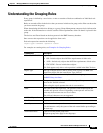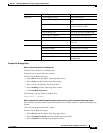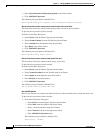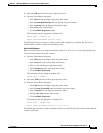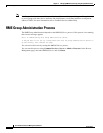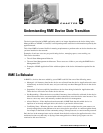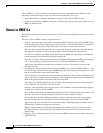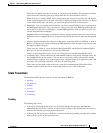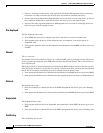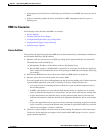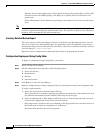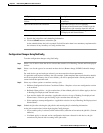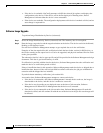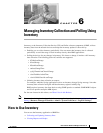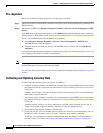
5-3
User Guide for Resource Manager Essentials 4.1
OL-11714-01
Chapter 5 Understanding RME Device State Transition
States in RME 4.x
These devices appear in the device selector in a separate group, Pending. The operator can initiate
application tasks (including jobs) by selecting these devices from the device selector.
When the device is added to RME, device management puts the device into this state, and invokes
all the registered application tasks such as Inventory Collection, Configuration collection, etc. Based
on the results of the tasks, the device goes into Pre-deployed, Normal or Aliased states.
• Suspended—You may suspend a device because you do not want to manage it, have it participate in
any RME application tasks. Only you can move a device out of this state. RME application does not
allow devices in this state to participate in normal RME application tasks (except for special cases
like the Suspended Device Report).
Suspended devices do not appear in the device selector. Syslogs from these devices do not cause any
automated actions to happen. However, syslogs from devices in this state are collected and reported
on.
• Aliased—Devices that have been detected as duplicates, at the time of Device Addition, as done in
RME 3.x. These devices cannot participate in RME application tasks (except for special cases like
the Duplicate Device Report).
These states are visible to you in the Device Management GUI and the Device Summary Report.
Here you can see how many devices are in each of the states.
There is a report that allows you to select a set of devices and view the states that they are in.
• Conflicting State—Devices that have the same name/IP Address as an already managed device, but
the sysObjectID for the two conflict. The user has to resolve this conflict. Note that the already
managed device continues to be in the managed state, and participates in all application tasks. The
new entry with conflicting credentials will go to the conflicting state.
These states will be made visible to the user via the Device Management GUI and the device
summary report to allow the user to see how many devices are in each of the states.
State Transitions
The following defines how the state of a device can change in RME 4.1
• Pending
• Pre-deployed
• Normal
• Aliased
• Suspended
• Conflicting
Pending
The Pending state occurs:
• If Inventory Collection for the device has succeeded, and the alias detection algorithm has
determined that this device is an alias of a device that is already in the Normal state, the device is
moved to the Aliased state requiring user interaction.
• If History for the device exists, the device is directly moved from pending to normal state, without
waiting for the results of the registered tasks.



